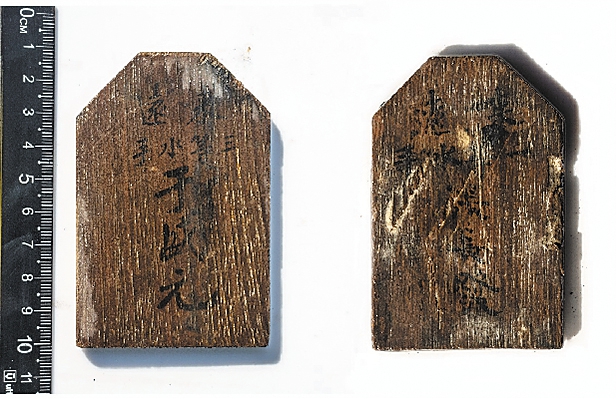Wrecked fleet provides clues to naval past
By Wang Kaihao| (China Daily)| Updated : 2023-10-20
Print Print
Wooden identity tags from the Laiyuan. [Photo/China Daily]
The Battle of Weihaiwei was the last naval engagement of the Sino-Japanese War. The Beiyang Fleet was besieged and annihilated in the battle. Its fall accelerated China's defeat in the war, which had a lasting and deep influence on the geopolitics and history of East Asia.
After the battle, Japan dismantled and salvaged components of sunken Chinese ships as spoils of war.
"The steel was heavily twisted and broken," Zhou said. "The complete bodies of the ships no longer exist."
From the wreck of the Dingyuan archaeologists salvaged 18.7 metric tons of armor near its main artillery cannon. The 94-meter ironclad, also made in Germany, was the flag carrier of the Beiyang Fleet and was considered among the world's best equipped battleships of its time. On the cruiser Jingyuan, archaeologists found two boxes of well-sealed shells.
A part of a broken wooden gangway ladder from the Laiyuan may be a crucial record of the battle.
"We found the inner side of the wood was severely burned," Zhou said. "That indicates the steel body of the Laiyuan was on fire. You can feel how fierce that battle was."
Some findings may correct historical rumors. The general public has long suspected a major reason why the Beiyang Fleet lost the battle was that the Qing rulers refused proposals to allocate money and the ships were thus not kept up to date for a number of years.

 Cultural hub of Jining revitalizes traditional culture
Cultural hub of Jining revitalizes traditional culture  Statistics: Fun facts about Heze's peonies
Statistics: Fun facts about Heze's peonies  Shandong province pioneers new quality productive forces
Shandong province pioneers new quality productive forces 